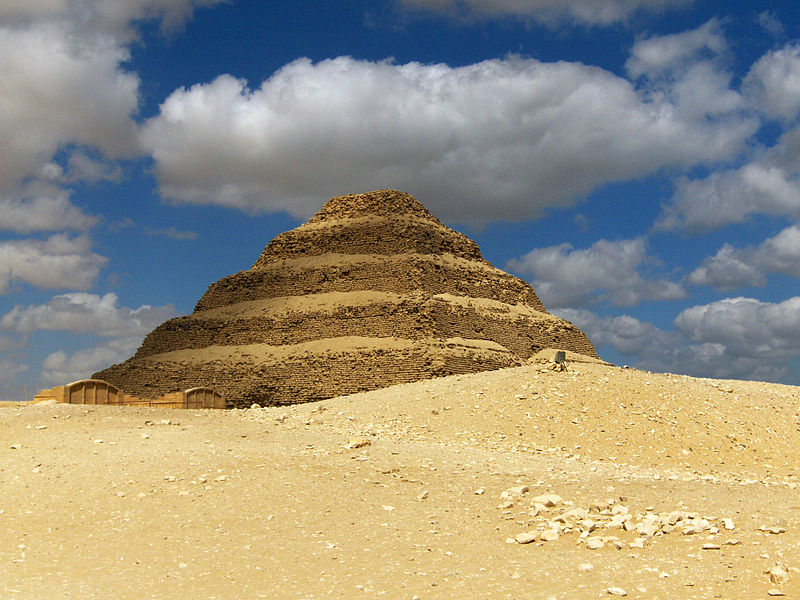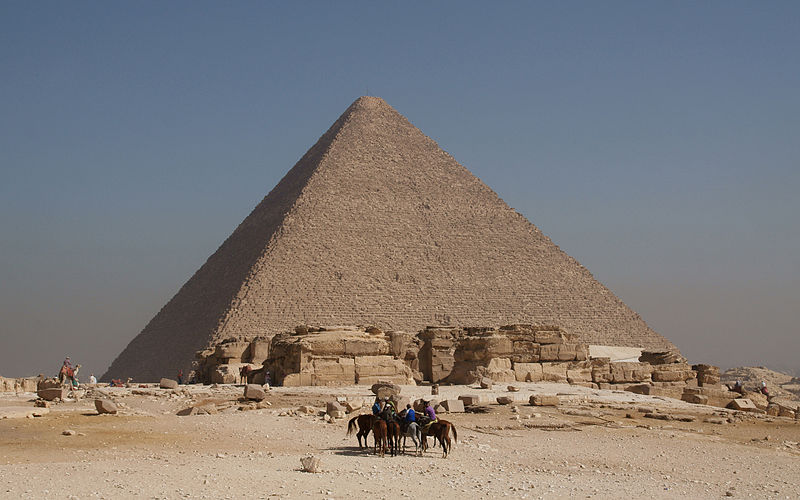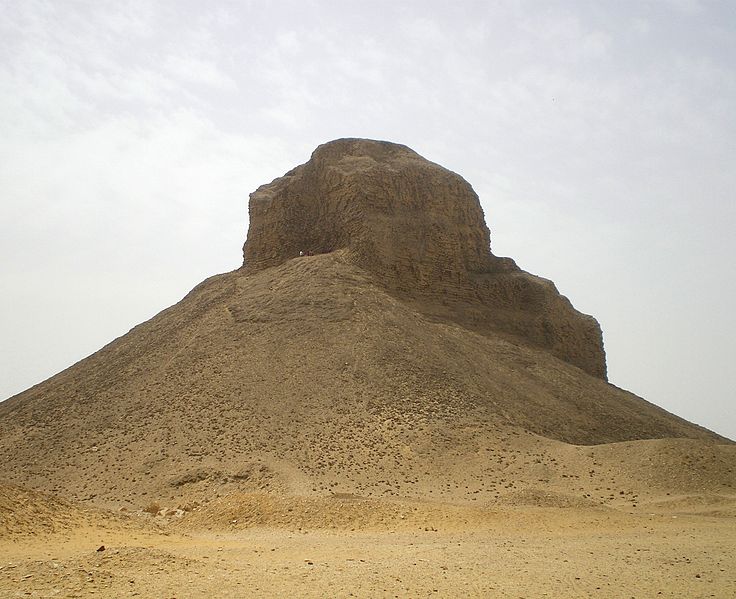The ancient Egyptian pyramids stand as enduring symbols of a remarkable civilization that flourished along the banks of the Nile River.
These awe-inspiring structures, built as elaborate tombs for pharaohs and high-ranking officials, showcase the ingenuity, engineering prowess, and religious beliefs of the ancient Egyptians.
Spanning millennia, these monumental edifices evolved in design and purpose, leaving an indelible mark on history.
From the pioneering Step Pyramid of Djoser to the grandeur of the Great Pyramid of Giza and the intricately inscribed Pyramid Texts, each pyramid tells a captivating story of architectural innovation, cultural significance, and the timeless quest for eternity.
| Pyramid | Pharaoh | Approximate Construction Dates | Location | Notable Features |
|---|---|---|---|---|
| Step Pyramid of Djoser | Djoser | c. 2630–2611 BCE | Saqqara | Early step pyramid design by architect Imhotep |
| Pyramid of Meidum | Sneferu | c. 2600–2560 BCE | Meidum | Originally a step pyramid, converted to true pyramid |
| Red Pyramid | Sneferu | c. 26th century BCE | Dahshur | First successful true pyramid with smooth sides |
| Bent Pyramid | Sneferu | c. 26th century BCE | Dahshur | Distinctive bent appearance |
| Great Pyramid of Giza | Khufu (Cheops) | c. 2580–2560 BCE | Giza | Largest and most famous pyramid, Seven Wonders |
| Pyramid of Khafre | Khafre | c. 2570–2544 BCE | Giza | Retains casing stones at the top |
| Pyramid of Menkaure | Menkaure | c. 2532–2504 BCE | Giza | Smallest of the Giza pyramids |
| Pyramid of Unas | Unas | c. 2375–2345 BCE | Saqqara | Contains early pyramid texts |
| Pyramid of Teti | Teti | c. 2323–2291 BCE | Saqqara | Pyramid texts, part of the Sixth Dynasty |
| Pyramid of Senusret I | Senusret I | c. 1961–1926 BCE | Lisht | Surviving pyramid from the Middle Kingdom |
| Pyramid of Amenemhat III | Amenemhat III | c. 1859–1813 BCE | Hawara | Known for its labyrinthine structure |
Timeline of the Pyramids of Egypt
1. Step Pyramid of Djoser (c. 2630–2611 BCE) – Saqqara
The Step Pyramid of Djoser, located at Saqqara near Cairo, was designed by the architect Imhotep during the reign of Pharaoh Djoser. It marked a significant departure from previous burial structures.
This pyramid is considered the earliest large-scale cut-stone construction and the first true pyramid. It consists of six gradually decreasing rectangular mastabas (burial structures) stacked on top of each other, creating the step-like appearance.
The complex included various buildings and courtyards, reflecting a more organized and complex approach to pyramid construction. Imhotep’s innovative design laid the foundation for future pyramid architecture.

2. Pyramid of Meidum (c. 2600–2560 BCE) – Meidum
The Pyramid of Meidum, situated at Meidum, began as a step pyramid under the reign of Pharaoh Sneferu.
It was later converted into a true pyramid by altering the shape of its structure. This pyramid is notable for its three distinct layers, which give it a stepped appearance.
The conversion from a step pyramid to a true pyramid was a result of engineering experiments to perfect the construction techniques needed for later pyramids. However, the outer casing of the pyramid collapsed over time, exposing its stepped core.
3. Red Pyramid (c. 26th century BCE) – Dahshur
The Red Pyramid, also known as the North Pyramid, is located in Dahshur and was built by Pharaoh Sneferu, who aimed to refine pyramid construction methods. It is named for its distinctive red limestone casing stones.
The Red Pyramid is notable for being the first successful attempt at constructing a true pyramid with smooth sides. It is considered a transitional pyramid due to its smooth sides and absence of a bent appearance like the earlier Bent Pyramid.
The success of the Red Pyramid’s construction influenced the design of subsequent pyramids, including the famous Great Pyramid of Giza.
4. Bent Pyramid (c. 26th century BCE) – Dahshur
The Bent Pyramid, also constructed by Pharaoh Sneferu, is located in Dahshur. It is named for its unique change in angle halfway up, creating a distinctive bent appearance.
This change in angle was likely due to concerns about the structural stability of the pyramid’s initial construction. The lower part of the pyramid was built with a steeper angle, but after experiencing stability issues, the angle was adjusted for the upper part.
The Bent Pyramid represents an experimental phase in pyramid construction, bridging the gap between the earlier step and true pyramids, and it provides valuable insights into the engineering challenges faced by ancient builders.

5. Great Pyramid of Giza (c. 2580–2560 BCE) – Giza
The Great Pyramid of Giza is the most iconic pyramid and one of the Seven Wonders of the Ancient World. Built for Pharaoh Khufu (also known as Cheops), this pyramid is a monumental feat of ancient engineering.
It’s characterized by its massive size, precise alignment with cardinal points, and original smooth white limestone casing stones. The pyramid complex includes smaller pyramids for Khufu’s queens, causeways, mortuary temples, and the Great Sphinx.
The construction methods and precision of the Great Pyramid continue to captivate researchers and historians, sparking theories and debates about its construction techniques.
6. Pyramid of Khafre (c. 2570–2544 BCE) – Giza
The Pyramid of Khafre is the second-largest pyramid at Giza and was built for Pharaoh Khafre, who was Khufu’s successor. It stands adjacent to the Great Sphinx and appears taller due to its higher location on bedrock.
The pyramid retains some of its original casing stones at the top, giving it a glimpse of its former polished appearance.
The complex includes a mortuary temple and a causeway that leads to the Valley Temple, all of which contribute to the significance of the pyramid complex as a religious and funerary site.
7. Pyramid of Menkaure (c. 2532–2504 BCE) – Giza
The Pyramid of Menkaure is the smallest of the three pyramids at Giza and was constructed for Pharaoh Menkaure. Despite its smaller size, it maintains its own unique significance within the Giza complex.
It’s mortuary temple and causeway showcase similar architectural features seen in the other Giza pyramids, reflecting the importance of these structures in ancient Egyptian burial rituals.
The pyramid’s overall design is simpler compared to its larger counterparts, emphasizing its own distinct characteristics.

8. Pyramid of Unas (c. 2375–2345 BCE) – Saqqara
The Pyramid of Unas is located in Saqqara and was built for Pharaoh Unas. It is notable for being one of the earliest pyramids to have inscriptions known as the “Pyramid Texts” carved on its walls.
These texts contain religious and funerary spells intended to guide the pharaoh’s journey to the afterlife.
The Pyramid Texts are considered among the earliest religious compositions in human history and provide valuable insights into ancient Egyptian beliefs about the afterlife.
9. Pyramid of Teti (c. 2323–2291 BCE) – Saqqara
The Pyramid of Teti, also situated in Saqqara, was constructed for Pharaoh Teti. Like the Pyramid of Unas, it contains the Pyramid Texts, indicating a continuation of the tradition. The pyramid complex includes a mortuary temple, a causeway, and a pyramid chapel.
The Pyramid Texts on its walls provide intricate details about religious beliefs and rituals associated with the pharaoh’s journey to the afterlife.
10. Pyramid of Senusret I (c. 1961–1926 BCE) – Lisht
The Pyramid of Senusret I is located at the Lisht necropolis and was built for Pharaoh Senusret I. This pyramid marked the return to pyramid construction after a period of decline. It has a more streamlined design compared to earlier pyramids, with a focus on maintaining stability.
The pyramid complex includes a mortuary temple, a causeway, and a valley temple. It’s one of the few surviving pyramids from the Middle Kingdom, highlighting the resurgence of pyramid building during this era.

11. Pyramid of Amenemhat III (c. 1859–1813 BCE) – Hawara
The Pyramid of Amenemhat III is situated at Hawara and was built for Pharaoh Amenemhat III. This pyramid is known for its innovative design, featuring an inner core made of mudbrick and limestone casing stones.
The inner core was accessed through a labyrinthine layout, which likely held symbolic and protective significance. While most of the mudbrick has eroded over time, the complex layout and design principles provide insights into the architectural experimentation of the time.
